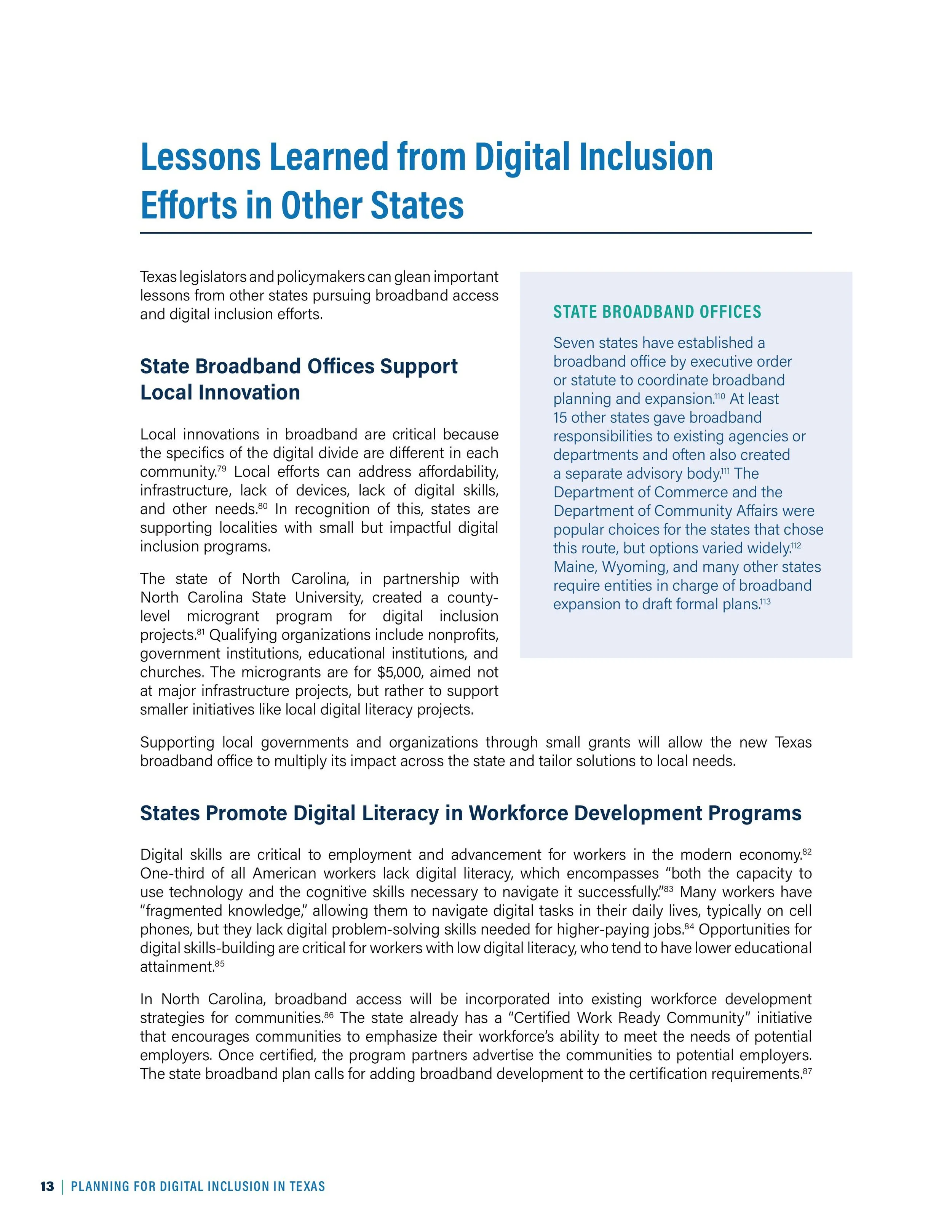PLANNING FOR DIGITAL INCLUSION IN TEXAS
For all Texans, broadband is a necessity. From students doing homework to adults looking for jobs, working, shopping, banking, and making family medical appointments, Texans need affordable and reliable high-speed internet.
The Governor’s Broadband Development Council and Texas legislators have focused on rural communities where broadband infrastructure deployment has lagged. State agencies and telecom companies are collaborating on efforts to expand rural broadband infrastructure.
Equally important is a focus on other under-served populations who also have far lower rates of broadband adoption compared with the general public. Low-income households, school-age children, older adults, BIPOC (Black, indigenous, and people of color) households, and people with disabilities are among the Texans who most lack broadband access. As legislators pass a law creating a state broadband office, they should ensure that the office assesses broadband access and adoption for all unserved and under-served populations. This is critical to closing the widely acknowledged “digital divide” and advancing digital equity.
Digital inclusion, or the effort to ensure that all communities can access and afford reliable, high-speed internet and have the technology equipment and know-how to use it, is multi-pronged. It depends not only on infrastructure deployment, but also on efforts relating to broadband affordability, digital literacy skills training, access to appropriate internet-enabled devices, and technical support. State support and local innovations based on local needs and resources are both necessary to close the divide.
The mission and programs of the state broadband office must prioritize digital inclusion to ensure that all Texans benefit from broadband access. As the COVID-19 pandemic has taught us, all Texans need broadband to study, work, connect to health care and essential services, and thrive. The Legislature and the contemplated state broadband office should ensure that digital inclusion measures are part of the core mission of the state’s work on broadband expansion.
























